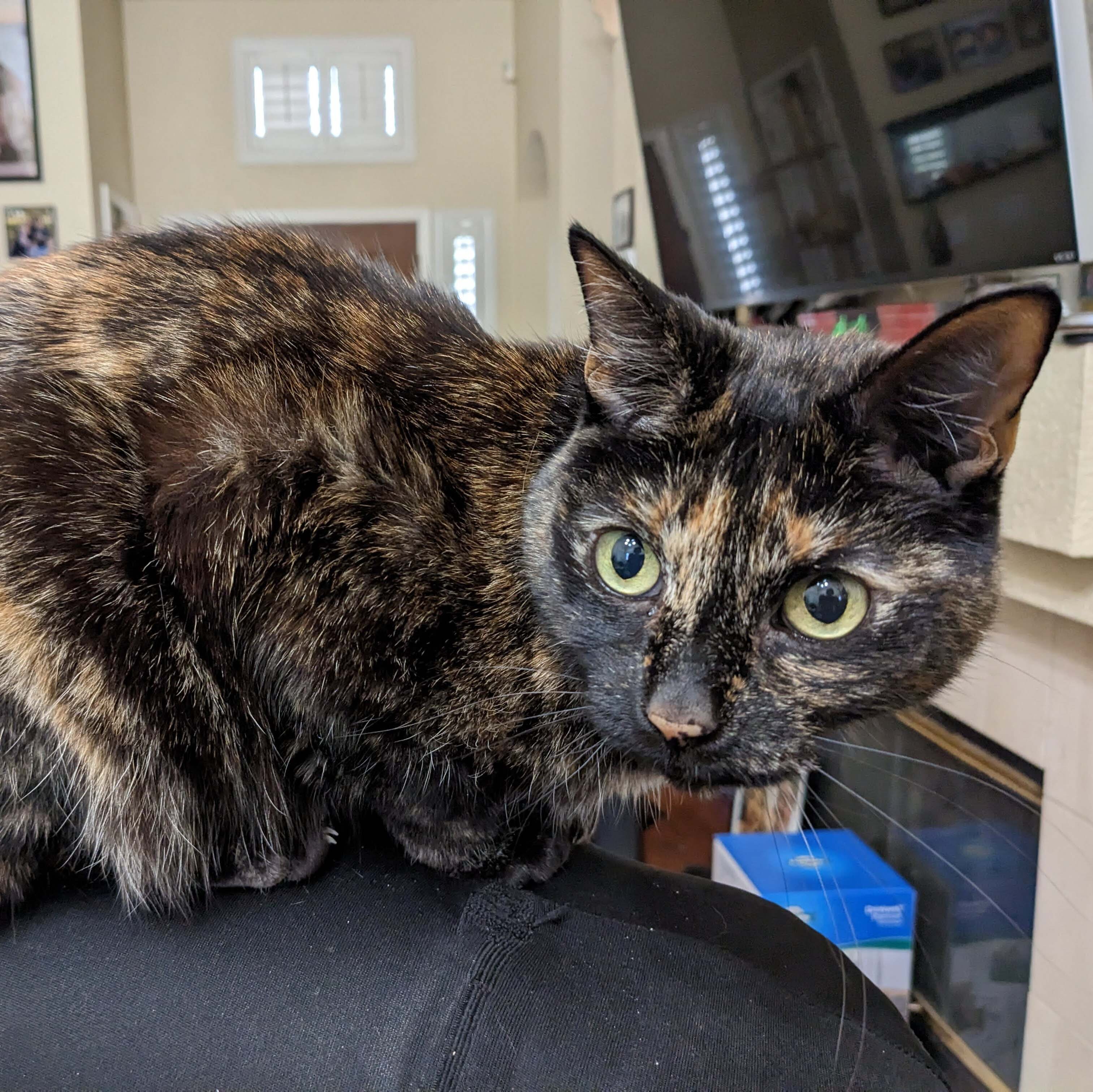I’ll start with mine. yes part of this was to brag about my somewhat but not too unusual setup. But I also wanna learn from your setups!
Anyways: I primarily use Gentoo Linux.
I have two headless servers: a Raspberry Pi 4B and a Oracle cloud VM (free tier). Both running OpenRC, and both were running mainline kernel with custom config (I recently switched the Pi to PiFoundation kernel due to some issues). The raspberry pi boots from SSD and has no sd card inserted.
Both servers were running musl libc instead of glibc for a while. This gave me a couple of random issues, but eventually I got tired and switched back to glibc.
I have a desktop running gentoo and a laptop running arch, but hoping to switch the laptop to gentoo soon.
Both are daily driving wayland (the desktop had nvidia card and used for gaming). The desktop is running a kernel with a minimal config that compiles in 2-3 minutes.
What’s your unusual setup like?
deleted by creator
Very cool! Thanks for sharing. I’ll pass this on to my friend who’s been at sea with his family for over 1 year.
deleted by creator
I have Void Linux running on a GPD Win 4 (6800u). It performs well enough to emulate Demon’s Souls through rpcs3 at 720p 40-60 fps. It has a button on the side which toggles the built in controller between a “kb+m” mode and a normal controller mode, so I wrote a udev rule which opens Steam in big picture mode if its not running already when I switch to the controller mode.
I also sandbox a bunch of applications installed from the repos (including Steam and Firefox) using bubblewrap instead of using something like Flatpak.
I have a custom (half-working) version of slurp which allows starting selection immediately, which in turn allows me to immediately get the position of the cursor, which I use to launch tofi under the cursor (I don’t know of any other way to do this on river or even Wayland in general).
I use secureboot with custom keys (using sbctl), and I build a unified kernel image from which I boot with dracut, into a fairly standard LVM-on-LUKS setup, all flicker-free (by manually turning off Plymouth at the right time). UKIs allow me to boot from an efi shell very easily if thing go very wrong.
I run dnsmasq for caching, together with stubby for DoT. I highly recommend at least dnsmasq if you use Steam (fixes weird issues with their downloads).
I toggle running Qt apps’ dark/light mode by modifying the qt5/6ct config file with a perl script which darkman runs. I switch the wallpaper in a similar way.
I don’t use a status bar, I put most of what should go there into the Emacs tab bar (with custom dynamic icons and everything). It has volume, battery, temperature, wifi, system load, incoming mail, playing music and time display. Everything but temperature display works on both Linux and OpenBSD (and some on Android too).
Honestly there’s a bunch more weird stuff but this is getting pretty long.
I have NixOS running on my main desktop with some unusual changes:
- / is mounted as tmpfs, with /etc, /nix and /var being mounted from the actual system partition (this actually isn’t too uncommon on NixOS)
- For swap, zswap and dynamically allocated swapfiles using swapspace daemon (this is imo the best swap setup if you don’t need hibernation)
- Akonadi (KDE’s PIM server) using PostgreSQL instead of MySQL
- ISO8601 date format, for this I have glibc’s en_DK locale which does this copied to en_SE because Qt has en_SE as the locale with ISO date
- A couple changes to make the layout more like macOS because I can:
- Partitions are either mounted or auto-symlinked (if they can’t be mounted there, such as for the system partition) under /Volumes
- I patched udisks to also mount devices under /Volumes
- User home directories are under /Users and root’s home is /var/root
- Keyboard layout changed as far as I can to be mostly like Mac’s so I don’t have to rethink layouts as much when switching between this and my MacBook
- Can’t technically list this anymore since I’ve had to tear it down for unrelated reasons but NFS using Kerberos authentication for my NAS
- This is apparently very unusual since a lot of games completely break with it but two monitors with the main monitor on the right
This is apparently very unusual since a lot of games completely break with it but two monitors with the main monitor on the right
This is unusual? I use the same monitor configuration, and I didn’t notice any problems with it. Or at least I didn’t figure out they could have been caused by monitor setup. Could you give me an example of what problems have you encountered?
Either games spawning on the wrong monitor and not reacting well to you moving the fullscreen window to the other monitor, or mouse input issues. Latest I’ve had was L.A. Noire, which locks the mouse to a portion of the screen and doesn’t allow you to freely turn the camera. (I just tested it again and now it seems to work fine though! I hope that persists.) Quake II doesn’t allow you to move the mouse at all, or rather only in what seems in like a 2 pixel wide boundary in the middle of the screen. No such issues if the other monitor is turned off or configured to be on the right side. I’ve encountered more games that had issues with this in the past but these two are the recent ones I’ve had trouble with since setting it up like this again.
A fellow en_DK user, I thought I was the only one.
Lenovo support seems to think I have an unusual setup since I run Linux on their Thinkpad & while the NVMe even after an RMA fails under heavy IO despite their partner WD, who sent me an email response saying they never test or certify drives for Linux or BSD. Many users have been experiencing similar failures with their controllers WD proudly boasts as in-house. Note that Lenovo also has a support PDF about running the device on Linux, but the support is ran by a bunch of clowns. Also not that when you purchase, the hardware brand is never mentioned so there is na room for due diligence.
Tl;dr: if you want a working Linux system, don’t purchase Western Digital or Sandisk drives.
I have been running my linux installs off of wd drives for years without any issues. Most of the devices I run are Asus laptops, maybe it is a Lenovo issue?
https://github.com/openzfs/zfs/discussions/14793
It seems to be an issue in the last year-ish but across a range of WD/Sandisk drives. They build controllers in house &, if the support is to be believed, don’t test or support Linux/BSD.
Ah, i see now. I use btrfs and the issue is with zfs.
Nope. Read it a bit deeper as the failures are for ZFS, BtrFS, Bcachefs, & Ext4.
I sometimes use a snap

Core2Duo with 2 GPUs running 6 monitors. Works like a charm for the last 5 years, it’s my everyday desktop and development station.
Downvote away because Manjaro and Wayland.
I am mostly concerned about that Core2Duo. How do you manage to not overload it?
It’s amazing how well Linux performs on older hardware. Wayland seems to reduce the resource utilization a fair bit as well. The screens on the 980Ti are quite a bit slower than the RX480 so I arrange my workload accordingly and throw some windows over to an activity to increase my available higher speed screens. But the CPU rarely pegs out, it’s not like I’m doing ML shit, just building software for telemetry and automation, or working in spreadsheets.
My username has a space and a newline in it.
Random things break at random times.
a) why? b) what does your shell prompt look like?
Not mine, but while I was an intern for a lab I enjoyed using a very normal-looking desktop with a casual 4TB of DDR4 and no SSD or HD, dual Xeon configuration. Rather, it did network boot and pivot root into an in-memory filesystem. It had a UPS and typically ran for months entirely from volatile storage and was used to run experimental photo and video processing. This was about ten years ago.
I can only imagine what that much RAM and a system that could hold it cost 10 years ago. Yikes.
I’m not too sure how unusual it is, but I have a satellite tracker on a pi 3 b+ based on satnogs. It helps other scientists get data out of cutsats and other satellites. It’s pretty easy to set up once you know what to set up.
I once had a butler program on a pi 1 with WiFi chip back around 10+ years ago. No ai, just a bunch of batch scripts + espeak. It was a cool project that would tell us the weather, time, any to-do items, and internet usage ( att had a hard limit of 100gb and I used a script tu tell how much we used per month). Ran for a couple of years and then disassembled it. Still have the GitHub repo. This was many years before Alexa, Google, and the other such projects. It wasn’t better at all (espeak sounds so robotic, even when tweaked).
I ran a Bitcoin miner on a pi and made -$4.50ish a month back a decade ago. It was my most popular wiki pages back when I self hosted one. People were really interested, but it never made any money. It was more of a proof of concept . It’s pretty easy to compile, but hard to track down all the dependencies. That was waaaay before the asci miners came into play.
Not my main rig, but my most unusual is 32-bit Yocto Linux on an Intel Edison that I got for free from a college professor that worked for Intel.
Yocto is awful. I mean it has a niche I guess, but there is basically no package manager. Somehow I managed to install a Rust toolchain on it, but it couldn’t build the web server I wanted to run on it.
I’d much rather have a Pi running a sane distro.
Oh, I remember having to use Yocto when I started experimenting with the BeagleBone Black SBC back in 2015. Yes I remember it being very hard to use. I remember I had need to rebuild the kernel to include a disabled kernel module. The cross compilation on my desktop PC didn’t work, so I had to build it on the BeagleBone. That was an awful process, it took about 6 hours.
For anyone not familiar, the BeagleBone Black was an SBC that came out as competitor to the Raspberry Pi 2. The main difference was the BeagleBone used an open source design, based on a non-NDA CPU unlike the RPI, so it meant they published full kernel sources. But in my experiments I found the BeagleBone CPU was much slower than the RPI, and it’s graphics hardware was almost non-existent compared to RPIs integrated graphics.
BBB is actually really good nowadays compared to where it started. I’ve got quite a few deployed hardware appliance designs with them baked in. The real time IO and subprocessor was a nice quick and dirty way to get a little psuedo FPGA
Yah, BBB was horrendously slow. Lots of neat features like realtime PDU and tons of IO, but the only way to use it was Debian headless because a full DE was painful. I bought a 7" touch display to use as an HMI that the BBB mounted on the back of and it duplicated the pins so you could put a cape on it (that didn’t conflict with the HDMI pins it used), but I never used it because it was so slow.
Knowing some fringe users, your setup is probably ~3 points or so ahead of the middle of the bell curve. You never know. There’s probably a guy running kernel 4.12 on a 1990s CPU with his showa era CRT monitor to play freedoom.
fringe
Kept reading it as fridge users and was really flummoxed for a few seconds
Well, you aren’t that far off after all!
Gentoo + OpenRC + TDE (therefore X) on both a first-gen Threadripper desktop with 96GB RAM and a laptop from 2008 with an Athlon64x2 processor and 2GB RAM. Updating gcc on the laptop can take a while, but it still serves well enough. Plus a couple of headless Pis that are also running Gentoo. Not overly unusual, but I may well have the only Threadripper of that gen running that specific distro and DE combination anywhere in the world, since each individual item is kind of low probability.
I have a Microsoft Surface 7 running NixOS. Everything works, even touch/pen
Debian testing on a MacBook Air 6,2 (2013). I guess that’s kinda weird. Works fine as a netbook: Firefox, Thunderbird, TigerVNC (handles the low resolution well) and SSH. That’s all I ask of the thing and it works fine. The only hardware that doesn’t work is the webcam, everything else is 100%
It was a free hand-me-down and I put a $45 battery in it so I can use it on the couch. I think what will kill it is when the proprietary charger dies, they cost more used on ebay than the battery did.
Nice I have a MacBook pro 2016(?) that runs a flavor of Ubuntu over at a local makerspace. It was hard as heck to find and customize the driver’s to get it working, but it does!










